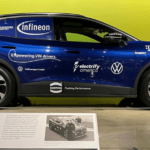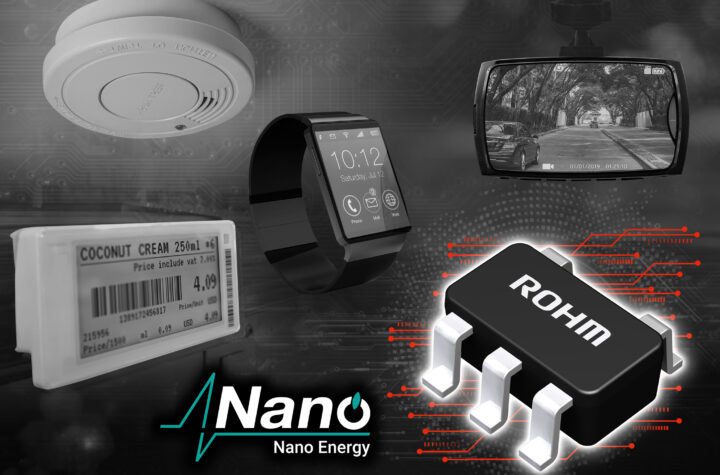EV is advancing in leaps and bounds in Asia. In 2021 the market for electric cars in China alone reached 3,231,362 presenting a growth rate of 143.2%1, most of it in pure battery electric vehicles (BEV). China’s EV penetration is 15.1% by 2021, a huge rise from merely 5.7% in 2020.
With the exception of Tesla (whose factory in Shanghai makes Tesla Model 3 – the most sold EV in the world – and Model Y), all the top 20 models of EVs sold in the Chinese market belonged to Chinese OEMs. In the global market, almost 20% of EVs come from Chinese manufacturers, with SAIC and BYD being the most dominant.
Building on domestic success
With this huge domestic market for electric cars in China, the Chinese government actively promotes the EV industry in the country with high subsidies for electric vehicles, a 380 million USD investment in charging stations, and tight integration with the smart grid roadmap called “Ubiquitous Power Internet of Things.” This included a managed EV charging pilot where EV drivers were prompted to charge whenever the utilities company needed it, meaning the grid could make better use of over-produced available renewable energy, which might otherwise be wasted. The Chinese government is also introducing new policies to promote mini/small EVs to be part of rural microgrids.
This move is not limited to China, Great Wall Motor launched its 100%-electric vehicle Ora Good Cat in Thailand and received 4,296 orders within 24 hours. This is in part a result of the ASEAN-China Free Trade Agreement, which has made the Chinese car cheaper than even the locally made Japanese EVs2.
With the rise of car markets in developing countries like India, it’s possible that Chinese EVs could achieve global success even without making much headway into markets in the West.
However, Europe and the US are where the real challenge to Chinese OEMs are. Putting to the test their ability to compete against established brands, navigate complex regulations (including GDPR), provide quality service, and compete on more than price alone. Some OEMs are already trying to jump-start their approach to these markets with partners that can bridge these gaps, with smaller players like Aiways selling their cars in Germany through a local electronics retailer EURONICS Deutschland.
However, the ability to face a complex marketplace includes more than just market access and requires understanding the adjacent vertices as well, including fleets, insurance ,charging points operators, and more. Requiring a more comprehensive and robust approach, including the ability to tackle issues like privacy and cloud computing may be needed.
He who controls the battery
China is also responsible for more than 75% of the total lithium cell producing capability across the globe with Chinese lithium assets approximately 30 times larger than those of the U.S.3 Covid-19 has led to serious supply chain challenges for automakers such as PSA Group, Fiat Chrysler, and Ford among others who control their manufacturing plants based in the Hubei province, which is the core of the virus spread.
But current battery technology is lacking, and better batteries are required with higher energy density, safer, and lower costs. Unlike current lithium-ion batteries, solid-state batteries do not contain heavy liquid electrolytes. Instead, a solid electrolyte is used that can be glass, ceramics, or other solid material. Without the need for a liquid, solid-state batteries in theory can be much denser and compact, translating in more range, and are less prone to fire risk. News reports have suggested Chinese electric car-maker NIO will offer the technology next year, Toyota and Volkswagen in 2025, while BMW, Stellantis, Mercedes, Renault-Nissan offer various dates before 2030.
The charging challenge
EV adoption in China has been so successful that the infrastructure can’t keep up. Even with over a million public charging stations, over two-thirds of the world’s supply, with almost 7 million electric cars queuing for charging is not an uncommon sight.
A big part of the problem stems from charging points that are not aligned with demand. For example, just 0.5% of all points are located on highways, and you may be able to find a charging station in some remote corner of Tibet but must queue in Shanghai, where about 30% of all cars are electric.
Some innovative solutions, like the ones offered by OEMs Nio and Geely — where batteries are changed automatically are promising, but they are not widespread enough to have a serious impact.
Want to learn more about how data can help your EV offerings, from charge points to personalized service? Contact one of our data experts today
















































 Fusion Processing continues growth trajectory with new Board member
Fusion Processing continues growth trajectory with new Board member ID.4 Challenge - Original record-breaking car now showcased at the Peterson Automotive Museum in Los Angeles
ID.4 Challenge - Original record-breaking car now showcased at the Peterson Automotive Museum in Los Angeles Stratasys Partners With Radford to Produce 500 3D-printed Parts for the Lotus Type 62-2 Coachbuilt Sports Car
Stratasys Partners With Radford to Produce 500 3D-printed Parts for the Lotus Type 62-2 Coachbuilt Sports Car Steinbrenner Racing expands ownership group with Julia Steinbrenner
Steinbrenner Racing expands ownership group with Julia Steinbrenner 100 laps under his belt for DeFrancesco’s INDYCAR debut
100 laps under his belt for DeFrancesco’s INDYCAR debut



